The Road to
Science Fiction
Volume 1: From Gilgamesh to Wells
Edited by James Gunn

SCARECROW PRESS, INC.
Published in the United States of America
by Scarecrow Press, Inc.
A Member of the Rowman & Littlefield Publishing Group
4720 Boston Way, Lanham, Maryland 20706
www.scarecrowpress.com
PO Box 317
Oxford
OX2 9RU, UK
Copyright 1977 by James Gunn
First Scarecrow reprint 2002
Originally published in 1977 by New American Library and
White Wolf Publishing
All rights reserved. No part of this publication may be reproduced, stored in a retrieval system, or transmitted in any form or by any means, electronic, mechanical, photocopying, recording, or otherwise, without the prior permission of the publisher.
ISBN: 978-0-8108-4414-8
The New American Library edition of this book was cataloged as LC#77-76965
Scarecrow Press, Inc.
 The paper used in this publication meets the minimum requirements of American National Standard for Information SciencesPermanence of Paper for Printed Library Materials, ANSI/NISO Z39.48-1992.
The paper used in this publication meets the minimum requirements of American National Standard for Information SciencesPermanence of Paper for Printed Library Materials, ANSI/NISO Z39.48-1992.
Manufactured in the United States of America.
To Edgar Allan Poe
Jules Verne,
and H. G. Wells...
who got it started
Contents
by Lucian of Samosata
Anonymous
by Thomas More
by Tommaso Campanella
by Francis Bacon
by Johannes Kepler
by Cyrano de Bergerac
by Jonathan Swift
by Ludvig Holberg
by Franois Marie Arouet de Voltaire
by Mary Shelley
by Nathaniel Hawthorne
by Edgar Allan Poe
by Fitz-James OBrien
by Jules Verne
by H. Rider Haggard
by Edward Bellamy
by Ambrose Bierce
by Rudyard Kipling
by H. G. Wells
Introduction
Science fiction is the literature of change. In the first edition of this anthology I called it the branch of literature that deals with the effects of change on people in the real world as it can be projected into the past, the future, or to distant places. It often concerns itself with scientific or technological change, and it usually involves matters whose importance is greater than the individual or the community; often civilization or the race itself is in danger. But shorter is better. Traditional literature is the literature of continuity, and thus of the past; science fiction is the literature of change, and thus of the present and the future. As the literature of change, science fiction, at its most characteristic, inserts the reader into a world significantly different from the world of present experience because of catastrophic natural events, because of the evolutionary alterations of time, or because of human activities, particularly scientific and technological. Its basic assumptions are that the universe is knowable (though it may never be fully known) and that people are adaptable (that is, they, like everything else, evolve as a consequence of environment and natural selection); science fiction is fundamentally Darwinian and thus could also be called the literature of the human species.
Science fiction has adopted other fictional modesthe adventure and the romance, for instancebut it is most typical when it deals with ideas worked out in human terms. It is not the literature of ideas but surely a literature of ideas. One touchstone story, Tom Godwins The Cold Equations (Astounding, August 1954), takes as its thesis that humanitys romantic notions about how life ought to be have no influence on the inexorable facts (the cold equations) of the universe. Another Godwin story said, Machines dont care.
At the hard core of almost every true science-fiction story is an ideathe quality that makes humanity human is curiosity; if people only saw the stars every thousand years, they would not adore but go mad; the star that shone over Bethlehem may have been a supernova that destroyed an intelligent raceand the reader who misses the intellectual level of discourse is missing what more than anything else distinguishes science fiction from other forms of fiction.
The skill of the science-fiction author is evidenced in the way he gives his ideas human form and value. In the process of fictionalizing his ideas, he may develop a structurea story or plot, if you likethat is indistinguishable from other kinds of fiction. Robert Heinlein, the dean of sciencefiction writers, once wrote (Of Worlds Beyond, 1947) that there are only three main plots for what he called the human-interest story (as opposed to the gadget story): 1) boy-meets-girl; 2) the Little Tailor; and 3) the-man-who-learned-better. It is for thisthe promise that draws a reader into a story and the reward that satisfies himthat we read fiction, and the more we are drawn into a story and care what happens to the characters, the better satisfied we are when the author resolves their situation.
But it is not for this alone that we read science fiction. The best sciencefiction stories are those that match manner with matter, story with idea. In The Cold Equations, for instance, we become concerned about the threat to the girl who stows-away aboard an emergency delivery ship in order to see her brother, who is a member of a small party exploring a frontier planet. The ship has only enough fuel to complete its mission; if the girl remains aboard, the ship will crash on landing, not only killing the girl and the pilot, but also dooming the members of the exploration party, who will not receive the plague serum the ship has been launched to deliver. Those are the cold equations, and the girl goes out the air lock. The readers concern for the girl is transformed into an intellectual awareness of a higher law than women and children firstsentiment is expensive, good intentions are irrelevant, and ignorance is punished as severely as guilt.
James Joyce has defined the epiphany of a short story as the flash of recognition that shows the situation in a new light: its soul, its whatness leaps to us from the vestment of its appearance. In the science-fiction story, the epiphany usually is a revelation not of character but of the relationship of man to his environment, whether man-made or natural, or of man to other men or to other creatures or to his own creations.
Thus defined, science fiction could not be written until people began to think in unaccustomed ways. They had, first of all, to think of themselves as a racenot as a tribe or a people or even a nation. Science fiction may contain unconscious cultural or political biases, but there is little tribalism, little rejoicing in the victory over another human group, but rather an implied or overt criticism of the act of war, and there is even less nationalism. Catastrophes, for instance, are catholic; in fact, they usually are placed close to home, as in H. G. Wellss The War of the Worlds or John Wyndhams The Day of the Triffids, for immediacy of impact if nothing else.
People also had to adopt an open mind about the nature of the universeits beginning and its endand the fate of man. Science fictions religion is skepticism about faith, although there is science fiction about religion, such as Arthur C. Clarkes The Star (Infinity, November 1955) and James Blishs A Case of Conscience (1958; story version, If, September 1953). The reasons for this are clear: religion answers all the questions that science fiction wishes to raise, and science fiction written within a religious framework (such as C. S. Lewis Perelandra


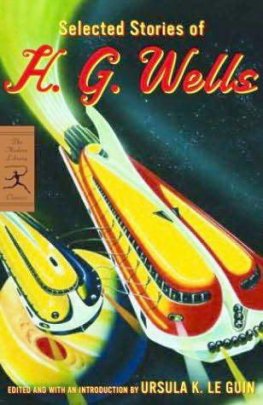
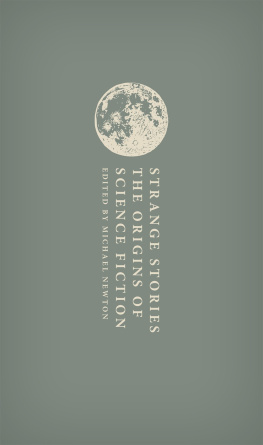
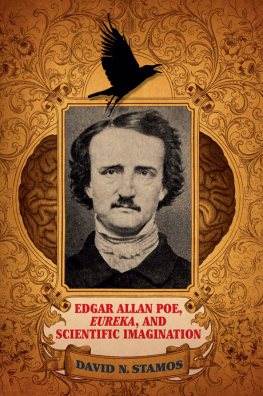
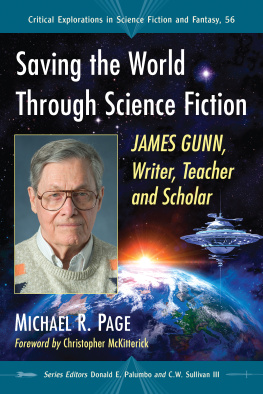


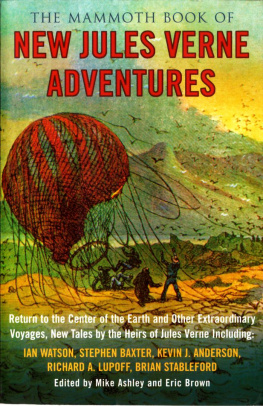

 The paper used in this publication meets the minimum requirements of American National Standard for Information SciencesPermanence of Paper for Printed Library Materials, ANSI/NISO Z39.48-1992.
The paper used in this publication meets the minimum requirements of American National Standard for Information SciencesPermanence of Paper for Printed Library Materials, ANSI/NISO Z39.48-1992.